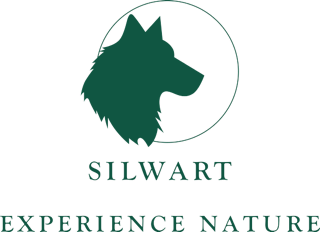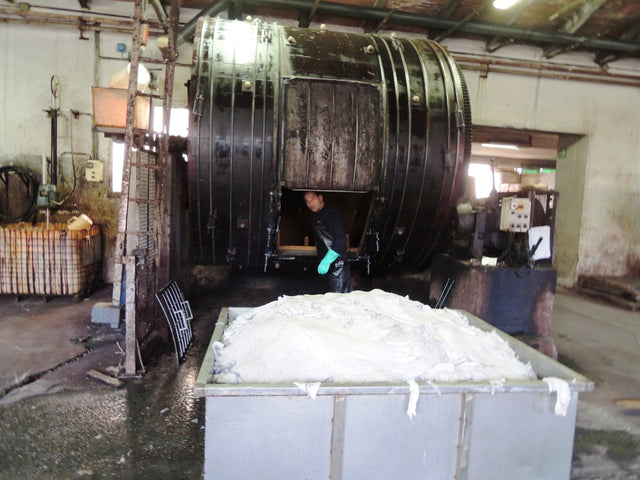Leather Tanning – Production Process
Leather vegetable tanning is a centuries-old tradition dating back to Prehistory and preserved in Tuscany, where it has reached its highest expression.
It is important to know that no animals are killed specifically for their hides.
Leather comes from by-products of the food industry, which, if not tanned, would face a complex and costly disposal process, ultimately becoming waste.
Thanks to skilled techniques passed down through centuries, tanneries transform this by-product into a highly valuable raw material.
Raw hides arrive at tanneries with the fur still on, preserved through salting to prevent decay.
The first stage of processing, called “green processing,” cleanses the hides of impurities and dirt using degreasing and antibacterial agents and rehydrates them after salting.
This is followed by liming, which separates the hair and epidermis from the dermis and prepares the leather for tanning substances, facilitating their absorption.
Next, de-liming, soaking, and degreasing are performed through numerous cycles in wooden barrels that are rotated at different speeds and durations based on the desired outcome.
The leather is now ready for tanning, a process that stabilizes it irreversibly and renders it decay-resistant using natural tannins, as is the case with vegetable tanning.
The leathers we select are exclusively vegetable-tanned, meaning they use plant-extracted tannins and are therefore 100% natural.
The leather is then pressed to remove excess water from the tanning process and split into two sections: the upper, more valuable part called the “grain” and the lower part known as the “split.” The thickness of the grain side is chosen based on the intended use for various leather products. For example, a thickness of about 1 mm is selected for wallets, while 3.5/4 mm is used for belts.
The split can be used for less premium items or by-products. Nothing goes to waste.
Following this are the steps of neutralization to reduce the leather’s acidity and re-tanning to impart the specific characteristics required for the final product.
Dyeing is done mainly in three ways: spraying, in a barrel, or by hand with a dabbing method.
Conditioning is performed in a barrel with animal or vegetable fats to give the leather softness, elasticity, and fullness.
To remove excess water, the leather is squeezed, laid out, flattened, and smoothed, then hung in a controlled temperature and humidity environment to dry, usually overnight.
Once dry, the leather is “sueded,” a process of tapping to enhance softness, and sometimes “buffed,” where it rotates in barrels for several hours to achieve a special grain pattern on the grain side and further softness.
Any final finishing, which can be mechanical or manual, imparts specific features like water resistance, dirt resistance, or scratch resistance.
Finally, the edges are trimmed to remove marginal imperfections or unnecessary parts of the leather, and the leather is measured per square meter, which is always indicated on the flesh side of each hide. The hides are priced and sold by the square meter.
Vegetable tanning ensures that leather becomes biodegradable and recyclable, thanks to a 100% natural treatment that is free of pollutants and harmful substances for both humans and the environment.
Additionally, production waste is converted into raw materials for other industries.
Would you have ever thought that leather must undergo such a long and skillful process to become the wonderful product we see? This lengthy process explains the value and quality of vegetable-tanned leather.

